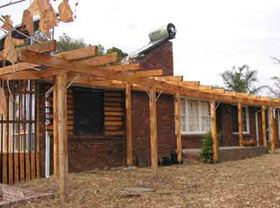passive building design

Passive building design is building design that uses non-energized design features to make a building more climate responsive and energy economical. It typically involves a variety of integrated strategies which take into account such factors as climate conditions throughout the year, the position of the sun (azimuth and altitude) at different times of the day and in different seasons, prevailing wind direction and speed, seasonal humidity, and average combined temperature.
Among many ways to achieve energy savings through passive design, are:
